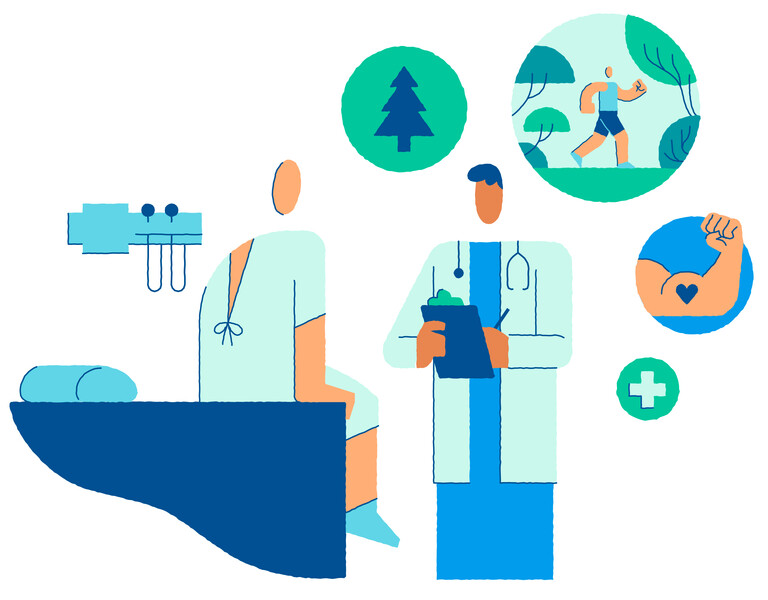Healthy Trees, Healthy Lives Promotes Health–Nature Connection
Family physician Daniel Porter tells his patients that he much prefers to write a prescription for time in nature than a prescription for drugs.
“As a primary care doctor, you start wondering what else you can offer patients rather than just giving them the next pill,” said Porter, a physician with the Lone Star Family Health Center in Conroe, Texas.
Healthy Trees, Healthy Lives (HTHL) is an initiative started in 2017 by the Southern Group of State Foresters in collaboration with other regional state forestry groups, and with funding from the U.S. Forest Service. The initiative aims to increase understanding of the connections between human health and nature.
“A little like our current unquestioning habit of wearing a seatbelt or knowing that smoking is bad for you, we hope to generally increase collective understanding of how health is connected to forests and to trees in our communities,” said Linda Moon, the marketing and communications manager for the Texas A&M Forest Service and one of the developers of the program.
Moon has been working to expand the reach of HTHL campaign beyond natural resource professionals. “We want other natural resource entities, health care entities, childcare entities, to spread the message in their networks,” said Moon. “So, we’re working on tools to empower those groups with that effort.”
HTHL started with each of the 13 southern state forestry agencies sharing social media messages about the connections of forests and trees to human health. According to Moon, the messages resonated and began to spread across the United States and into audiences and networks not typically reached by state forestry agencies.
In 2019, the southern state forestry agencies applied for and were awarded a Forest Service grant to fund an expanded and more comprehensive HTHL communications campaign. A key component of the campaign is development of an engaging, accessible website that will eventually include a research library, downloadable communications and marketing toolkits, media relations support, educational activities and curriculum, and slideshows that doctor’s offices can display in their lobbies and waiting rooms to communicate the health benefits of trees and forests.
The site also includes success stories, such as the Lone Star Family Health Center , UF Health Children’s Healing Garden (described in the Updates section), and the #QuaranTREES campaign. This innovative campaign started by Baton Rouge Green, a nonprofit organization in Louisiana, lets people know that they can benefit from green spaces without even stepping outside and encourages people to post pictures of their views of green scenes to social media platforms.
“A lot of people think, ‘Trees are good, I like the way they look and that makes me feel happy.’ - but we're saying it is way beyond that,” said Gretchen Riley, a staff forester with the Texas A&M Forest Service and a key member of the HTHL team. “Trees do a lot of things for us from a biological standpoint at the molecular and chemical level that really impact our quality of life and our health in a positive way.”
Robert Seeman, the state coordinator of Louisiana Community Forests, worked with the web developers to create an HTHL website that has appeal and functionality for a broad spectrum of users.
“We wanted the site to be accessible to people with different levels of understanding of the subject matter,” said Seeman. “We want the student who's doing a research paper to use this. We want a teacher who might be teaching a high school science class to use this. We want a doctor who's looking for medical research articles to use this.”
HTHL is inspired by the vision of helping people understand the connection between trees, forests and health, and using that knowledge to improve their health. Dr. Porter says those connections are now scientifically proven.
“As the science progresses, that’s what I buy into,” said Dr. Porter. “That’s what I’m trained to do—see the science. I want evidence that it’s working. And science shows that trees and nature can boost the health of my patients and boost the health of our community.”
To learn more about the Healthy Trees, Healthy Lives initiative visit: https://healthytreeshealthylives.org/

Sep 23, 2020



